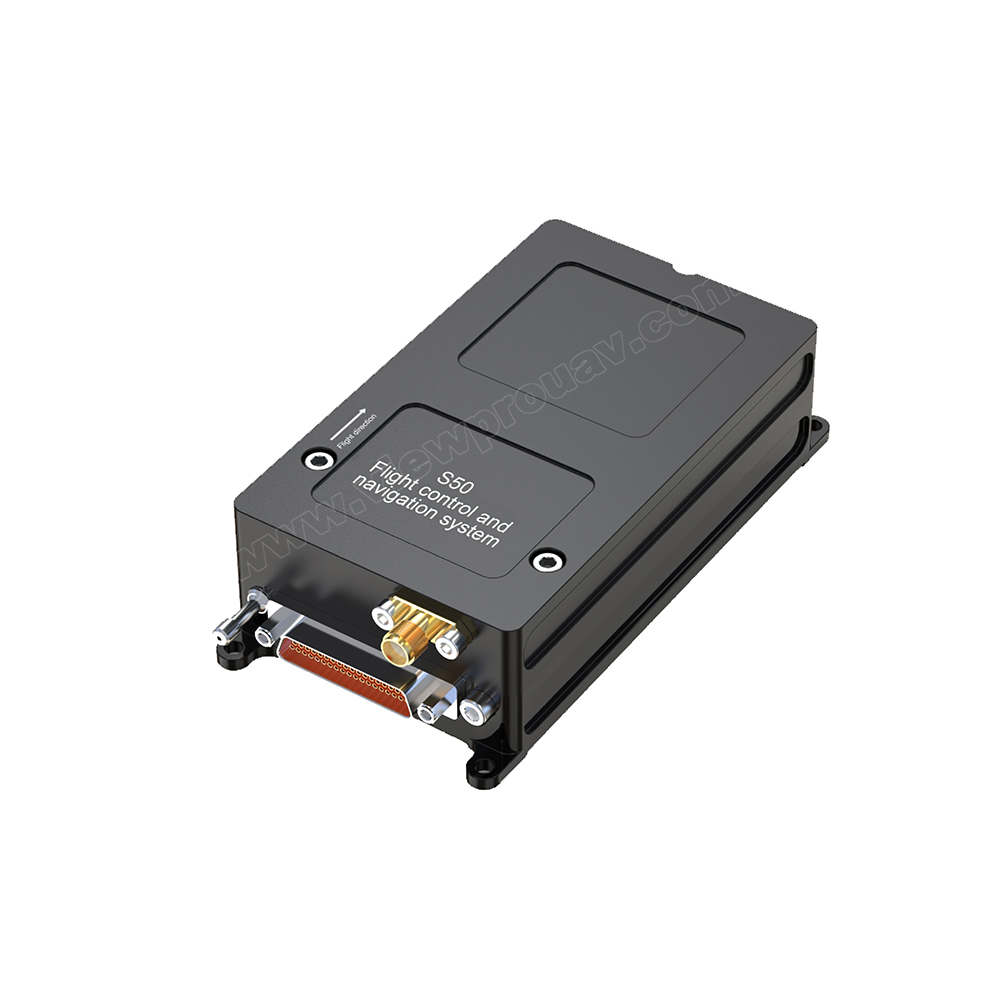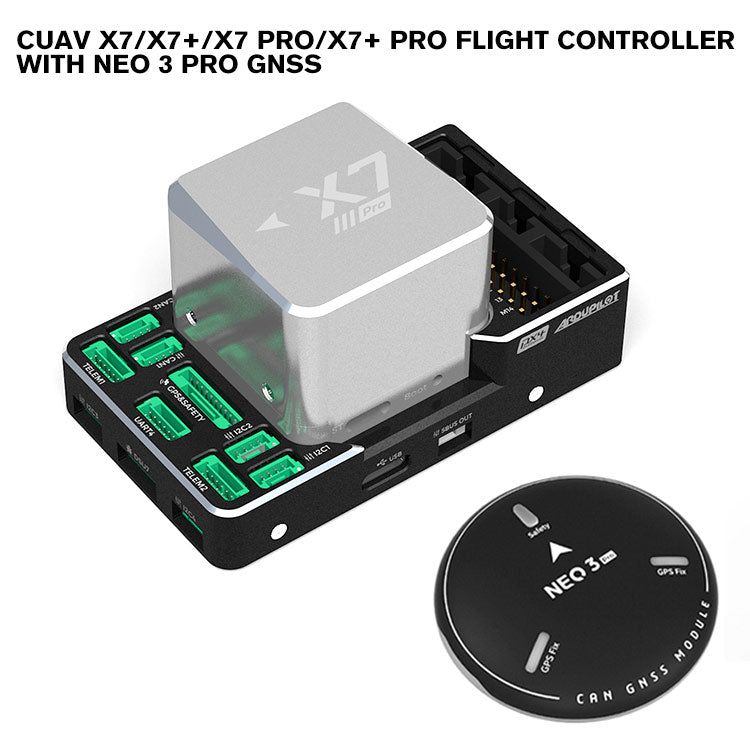SparkNavi Drone Flight Controller and GNSS/INS Made in Taiwan: Precision and Innovation
SparkNavi Drone Flight Controller and GNSS/INS Made in Taiwan: Precision and Innovation
Blog Article
The Relevance of Drone Trip Controllers in Modern Aerial Innovation: Trick Components and Their Impact
In the realm of modern-day airborne innovation, drone flight controllers work as the pivotal systems that manage a drone's performance and capacities. These innovative units incorporate necessary parts such as microcontrollers and GPS modules, promoting security and precision in flight operations. Their function is particularly pronounced in independent features, where innovative formulas boost navigating and challenge avoidance. As markets progressively count on drones for applications varying from farming to surveillance, the advancing innovation within trip controllers raises critical questions about their future influence and possible improvements. What advancements lie ahead that could redefine our understanding of drone capacities?

Summary of Drone Trip Controllers
In the realm of airborne modern technology, drone flight controllers function as the critical mind of unmanned aerial lorries (UAVs), enabling precise maneuverability and security throughout flight. These innovative systems incorporate sensing unit information, processing formulas, and control inputs, allowing drones to implement intricate trip patterns with precision.
Drone flight controllers utilize numerous sensing units, such as gyroscopes, accelerometers, and GPS modules, to analyze the UAV's orientation and placement in real-time. This information is necessary for preserving equilibrium and guaranteeing secure procedure in varied environmental problems. The controllers procedure this information to make rapid modifications to the drone's motors, enabling smooth shifts and responsive handling.
In addition, flight controllers are furnished with advanced software application that supports functions such as waypoint navigating, barrier evasion, and autonomous trip capacities. This software application is crucial for both industrial and entertainment applications, where reliability and precision are critical. As drone innovation continues to advancement, the development of trip controllers will certainly play a pivotal role in enhancing UAV functionality, adaptability, and safety, inevitably expanding their applications throughout different industries.
Trick Parts Explained
Comprehending the essential components of drone trip controllers is vital for realizing exactly how these systems operate successfully. At the heart of a trip controller is the microcontroller, which functions as the mind, refining information from various sensing units and carrying out commands. Important sensing units include accelerometers and gyroscopes, which measure the drone's orientation and activity, supplying vital feedback for stablizing.
One more key part is the barometer, which evaluates altitude by measuring atmospheric pressure, while GPS modules use positional data, making it possible for independent navigation - SparkNavi drone flight controller and GNSS/INS made in taiwan. The trip controller likewise interfaces with Electronic Speed Controllers (ESCs), which regulate the rate of the drone's electric motors based upon the controller's commands
Communication components, such as radio receivers, promote push-button control input, enabling drivers to send commands in real-time. In addition, some flight controllers integrate software application that can deal with complicated algorithms for waypoint navigation, trip preparation, and telemetry information evaluation.
Role in Flight Security
Central to maintaining trip security, drone trip controllers use innovative algorithms to refine sensor data and make real-time adjustments. These controllers are geared up with a variety of sensing units, consisting of accelerometers, barometers, and gyroscopes, which continually keep an eye on the drone's alignment, altitude, and speed. By interpreting this information, the trip controller can recognize deviations from the desired flight path and respond promptly to preserve security.
For circumstances, if a drone experiences an unanticipated gust of wind, the trip controller can swiftly readjust the motor rates to counteract the disturbance, making certain a stable flight trajectory. This capability is critical not just for hand-operated flight procedures however likewise for performing complex maneuvers and preserving smooth trip in various environmental conditions.
.png)
Additionally, the innovative algorithms made use of in trip controllers, such as PID (Proportional-Integral-Derivative) control, permit fine-tuning of the drone's feedback to this link modifications in flight problems. By optimizing these control criteria, trip controllers can boost security, enhance responsiveness, and minimize pilot work. Eventually, the duty of flight controllers in making sure flight stability is crucial for the risk-free and effective procedure of contemporary drones throughout diverse applications.
Influence On Autonomous Workflow

Self-governing procedures are specifically essential click for info in diverse applications such as farming, distribution, and security services. With improved trip controllers, drones can autonomously navigate predetermined paths, efficiently gather information, and adapt to dynamic atmospheres. This capacity reduces the requirement for consistent human oversight, consequently boosting functional efficiency and safety and security.
Moreover, the implementation of artificial intelligence strategies within trip controllers enables drones to enhance their performance in time by finding out from previous objectives. This flexibility paves the way for more advanced independent applications, such as throng innovation, where numerous drones collaborate their actions to accomplish an usual objective.
Future Trends in Flight Controllers
Advancements in flight controller innovation are positioned to transform drone abilities in the coming years. One substantial fad is the assimilation of expert system (AI) and maker learning formulas, enabling drones to pick up from their Click Here settings and make real-time choices. This development will boost self-governing navigation, barrier avoidance, and mission preparation, considerably improving functional efficiency and safety.
Moreover, the growth of innovative sensor modern technologies, such as LiDAR and multispectral imaging, will certainly provide trip controllers with richer data inputs. This will help with extra advanced analytical capacities, enabling drones to carry out intricate jobs, such as accuracy agriculture, search and rescue, and facilities inspections with unmatched precision.
One more emerging fad is the miniaturization of trip controller components, which will certainly result in lighter and a lot more compact drones. This evolution will expand trip periods and haul capabilities, making drones more flexible for numerous applications.
Verdict
In final thought, drone trip controllers act as crucial parts in modern airborne modern technology, ensuring security and precision in ability to move with the integration of microcontrollers, accelerometers, and GPS components. SparkNavi drone flight controller and GNSS/INS made in taiwan. Their ability to make it possible for independent operations and adjust to various applications emphasizes their significance throughout numerous industries. As innovations in expert system and sensor technology continue to emerge, the possibility for boosted capabilities and boosted functional effectiveness in drone systems will likely reshape the future of aerial applications
Central to keeping flight stability, drone flight controllers use innovative algorithms to refine sensor data and make real-time changes. By analyzing this data, the trip controller can recognize inconsistencies from the desired trip course and react immediately to preserve security.
Additionally, the sophisticated algorithms used in flight controllers, such as PID (Proportional-Integral-Derivative) control, enable for fine-tuning of the drone's reaction to modifications in flight problems. Eventually, the duty of flight controllers in ensuring trip security is important for the efficient and safe procedure of modern drones across varied applications.
The advancements in drone flight controllers not only boost flight stability however also significantly influence autonomous procedures. SparkNavi drone flight controller and GNSS/INS made in taiwan.
Report this page